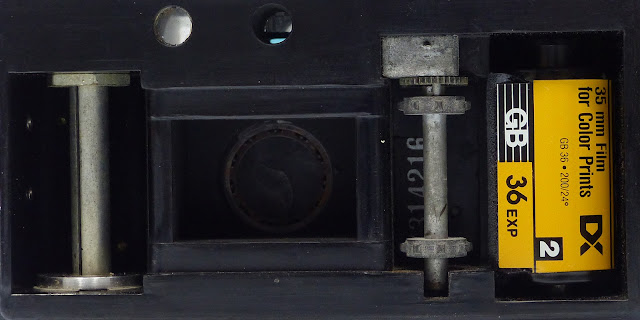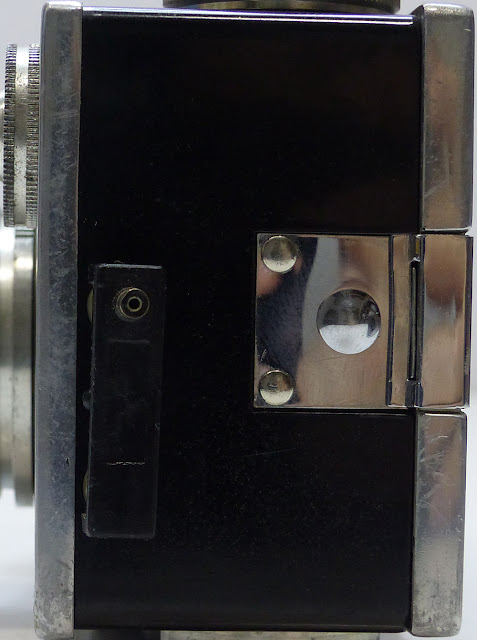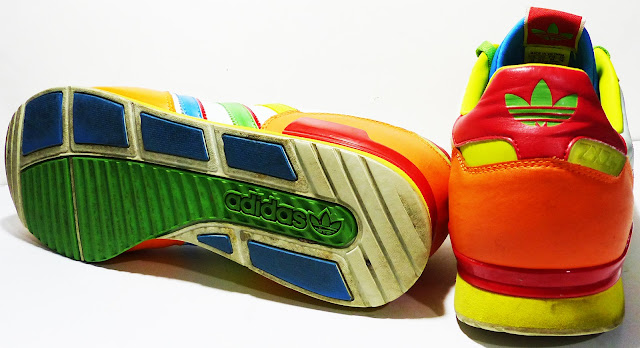August 19, 2021
#435
Gentle reader,
This is part two of a four part series. Part one can be read here:
Since I have limited room in my now tiny collection, I chose the ONE camera which was NOT given to me to pass on to someone else, via eBay. Starting on August 22, 2021 at 9:00 PM Eastern or 6:00 PM Pacific time, THIS camera will be for sale at no reserve on eBay. Items for sale by rfcollectin | eBay
Now, this camera, an Argus C-3, the venerable "Brick" is a VERY early model, in fact it is the 4,216th one which was made, all the way back in 1939! It is 82 years old and works perfectly!
There were more than one MILLION Argus C-3 cameras made in several variations. The newer they are, the less adjustability the have. Here are three variations I once had including this one:
There was a pink tint to the white background which I could not get rid of, so I converted the photo to black and white.
The left one's leather covering is grey. Note there is only one control on the front and a large addition to the top which includes a light meter.
The middle one's leather was beige or light tan. It has the same number of controls as the 1939 model, but only five shutter speed choices to the originals ten. It has a shoe mounted light meter which one reads and sets the speed by.
I will explain each piece and control of the camera. My parents had one as were were kids, I do not know from when.
The numbered dial is the film counter. When one turns the left dial, the film's sprocket holes are counted and the six-sided device moves a little. It stops the film when one frame has been wound.
The last thing is the shutter button, top right. It has a little locking device on it.
The round metal disc on the right is the tripod socket with the standard 1/4" threaded hole. The small black six-sided device holds the camera level when on it's "feet" comprised of the two round devices.
One pulls the the film rewind knob downward to allow the film cartridge to be inserted or removed.
Note the two sprockets (with teeth) which transport the film during winding. As noted above, the little six-sided device (sticking up from the top) is what counts the film's movement and is also pressed to release it for rewinding.
In the dark hole in the middle is the back of the shutter.
To focus a rangefinder camera, one looks for a something vertical in the subject area. For instance, the side of a face. By rotating the rangefinder ring OR lens' body, one watches and when the face's edge (or other vertical subject) aligns with it's lower (blue tinted) half in the window, the camera is in focus.
Above is an aftermarket adapter which plugs into those two holes and allows one to use a separate flash or even many in a studio setup by plugging their flash's cord into the round socket opposite the two prongs.
This lens' maximum opening is f3.5. The minimum is f18. The lower the number, the wider the opening.
After World War II, the number was changed to F16 to make worldwide parity.
To open or close the aperture (inside the lens) one used their fingers to rotate the ring with the two metal pegs sticking out of it.
Both shutter speed and aperture opening combined allow one to make correct exposures.
For an action shot, a wide open aperture and fast shutter speed is required to stop the action.
To show speed, a narrow aperture and slow shutter speed would blur a moving subject's movement.
To make the subject, say a person or row of people, in focus, but the background blurry, again, a wide open aperture and fast shutter speed.
To make everything from say three feet (one meter) in front of you to the back of a room (or field or valley, for example) ALL in focus, the smallest aperture and correspondingly slow shutter speed (and a tripod) are needed.
One rotates the rangefinder OR the lens body itself while looking through the rangefinder hole (window) on the back of the camera. The lower portion of what one is seeing is blue tinted, the upper half is not. Once both halves are aligned, the camera is in focus.
Then one switches their eye to the left hole (window) to compose the photo and makes the shot.
Years later, (but for quite a while when C-3s were still selling) Argus made more sleek looking (and expensive) cameras. Like this C-forty-four. Prior to this was a C-4 which did not have interchangeable lenses like this one does. Note that there are only five speeds, plus B which holds the shutter open until you release the button.














































































